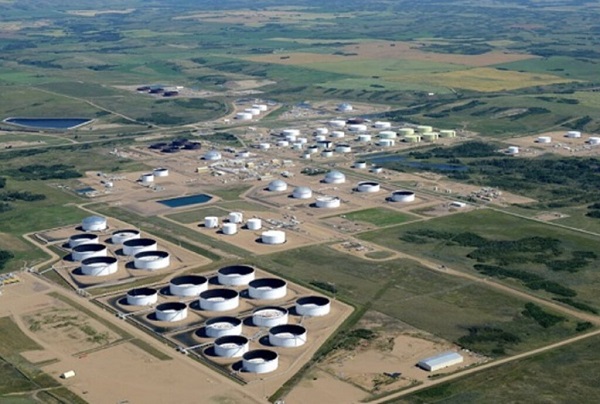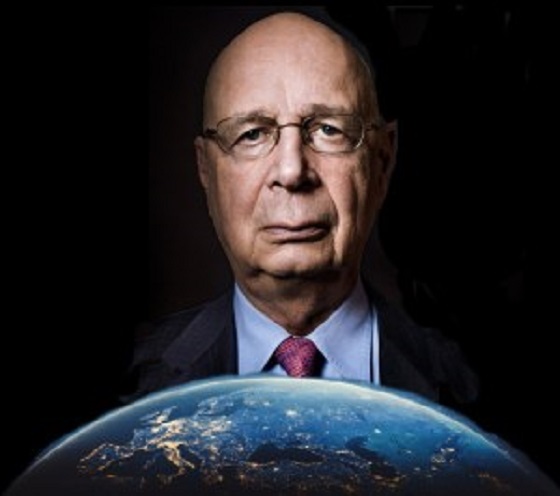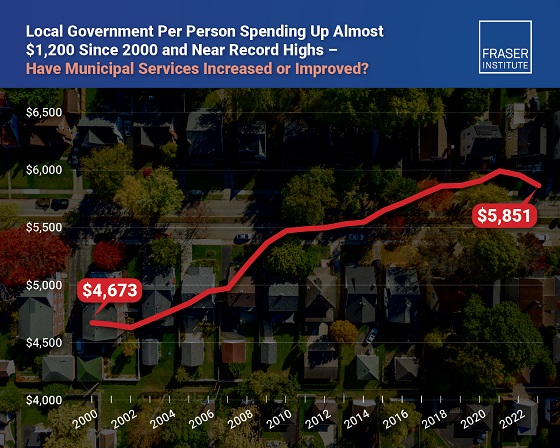Economy
Trudeau’s Economic Mismanagement Exposed: GDP Report Reveals Alarming Decline in Canadian Prosperity

The latest “Gross Domestic Product, Income, and Expenditure: Third Quarter 2024” report highlights six consecutive declines in GDP per capita & collapsing business investment
Good evening my fellow Canadians, and welcome to the final chapter of Canada as a thriving economy, brought to you courtesy of Justin Trudeau. The latest GDP report isn’t just a spreadsheet of bad news—it’s a grim look at the devastation Trudeau has unleashed on Canada’s economy.
Here’s what they won’t tell you: while Trudeau prances around on the world stage, preaching about climate change and “equity,” the average Canadian is getting poorer. GDP per capita—one of the most telling measures of prosperity—has now declined for six consecutive quarters, hitting levels not seen since 2017. Let that sink in. Under Trudeau’s leadership, Canadians are worse off today than they were seven years ago.
Canada’s GDP Growth: A Sluggish Economy Falling Behind
The latest figures from Statistics Canada’s Gross Domestic Product, Income, and Expenditure: Third Quarter 2024 report show an economy struggling to find its footing. Real GDP grew by 0.3% in Q3 2024, a slowdown from the 0.5% growth in the first and second quarters of the year. On an annual basis, GDP growth for 2023 was a modest 1.1%, further highlighting Canada’s weak economic momentum.
In real terms, Canada’s GDP as of Q3 2024 stands at $2,419,572 million (chained 2017 dollars). While the economy continues to expand, this growth pales in comparison to the nation’s surging population.
GDP Per Capita Declines: A Warning Sign for Canadians
Canada’s economic growth is not keeping pace with its rapid population expansion. In Q3 2024, GDP per capita—arguably the most important measure of economic health—declined by 0.4%, marking the sixth consecutive quarterly drop. With a staggering 3.2% population growth in 2023, Canada’s economy cannot sustain the same level of prosperity for its citizens.
Current GDP per capita is estimated at ~$54,000, down from its pre-pandemic high of ~$58,100 in 2017, and 2.5% below 2019 levels. To return to its long-term trend, GDP per capita would need to grow at an ambitious 1.7% annually for the next decade, a rate well above the recent average of just 1.1% per year since 1981.
Historical Context: Long-Term Prosperity Eroded
The report shows a troubling trajectory in inflation-adjusted GDP per capita over decades:
- 1981: ~$36,900
- 2017: ~$58,100
- 2024: ~$54,000 (estimated due to consecutive declines).
Despite Canada’s resource wealth and economic potential, GDP per capita remains 7% below its historical growth trend, signaling systemic productivity and investment issues.
Key Drivers of GDP Growth in Q3 2024
The Q3 2024 report highlights the components influencing GDP growth:
- Household Spending: +0.9%
- Government Spending: +1.1%
- Business Investment in Machinery and Equipment: -7.8%
- Exports: -0.3%
- Imports: -0.1%
While household and government expenditures provided some lift, the steep decline in business investment—down nearly 8%—and weaker exports reveal structural weaknesses in Canada’s economic model.
A Warning for the Future
These numbers tell a grim story: Canada’s economic growth, when adjusted for its population explosion, is failing to provide real benefits to its citizens. GDP per capita declines, stagnant productivity, and plummeting business investment highlight the challenges ahead. Without dramatic improvements in productivity, competitiveness, and fiscal policy, Canada’s long-term economic prospects remain precarious.
Trudeau’s Population Bomb
In 2023, Canada’s population grew by a jaw-dropping 3.2%, adding over 1.27 million people—the size of Calgary—in just one year. Trudeau’s open-door immigration policy is out of control. But here’s the kicker: the economy isn’t keeping up. GDP growth is crawling at 0.3%, while GDP per capita—the number that actually reflects living standards—has fallen 2.5% below pre-pandemic levels.
What does this mean? Trudeau is creating a country where there are more people, but less wealth to go around. He’s importing voters for his political base while ignoring the basic economics of supply and demand. More people mean more pressure on housing, healthcare, and infrastructure—all of which are already in crisis. Trudeau gets the photo ops, and Canadians get poorer.
Productivity? What’s That?
Here’s the real scandal: Canada’s productivity is collapsing, and Trudeau couldn’t care less. Business investment in machinery and equipment—a cornerstone of economic growth—dropped 7.8% in Q3 2024. That’s not a blip. It’s part of a long-term trend.
Under Trudeau, Canada has become hostile to business. With punishing taxes, endless red tape, and policies designed to appease radical activists, companies have stopped investing. They’re pulling back because they see no future in a country run by a trust-fund prime minister who treats the economy like his personal virtue-signaling playground.
Exports Collapse, Government Spending Soars
Exports fell 0.3% this quarter, after a 1.4% drop the quarter before. That’s Canada losing its competitive edge, plain and simple. While Trudeau waxes poetic about “green transitions,” other countries are eating Canada’s lunch.
Meanwhile, Trudeau’s solution to every problem is predictable: throw money at it. Government spending rose 1.1% in Q3 2024, marking the third consecutive quarterly increase. But this isn’t investment—it’s waste. It’s billions spent on flashy programs that do nothing to address Canada’s fundamental economic problems.
The OECD Warning Trudeau Ignores
Here’s a fact Trudeau won’t tweet about: The Organization for Economic Co-operation and Development (OECD) projects that Canada will have the lowest GDP per capita growth of all member countries through 2060. That’s Trudeau’s legacy: turning Canada into the slowest-growing economy in the developed world.
This isn’t just incompetence—it’s deliberate. Trudeau’s agenda isn’t about making Canada prosperous; it’s about centralizing power. His policies crush the middle class, drive businesses out, and create dependence on government handouts.
The Final Verdict
Justin Trudeau has managed to take one of the most resource-rich, opportunity-filled countries in the world and drive it into economic stagnation. He’s turned Canada into a welfare state for the many and a playground for the elite. GDP per capita is falling, productivity is collapsing, and the future looks bleak for ordinary Canadians.
Let’s be clear: Trudeau doesn’t care. As long as he’s jet-setting to global conferences, virtue-signaling about climate justice, and securing his legacy as the darling of the global elite, the suffering of everyday Canadians is irrelevant to him.
Canada deserves better. It deserves leadership that values hard work, economic freedom, and the dignity of a prosperous nation. And until Trudeau is gone, don’t expect any of that.
Subscribe to The Opposition with Dan Knight .
For the full experience, upgrade your subscription.
Alberta
Pierre Poilievre – Per Capita, Hardisty, Alberta Is the Most Important Little Town In Canada

From Pierre Poilievre
Business
Why it’s time to repeal the oil tanker ban on B.C.’s north coast

The Port of Prince Rupert on the north coast of British Columbia. Photo courtesy Prince Rupert Port Authority
From the Canadian Energy Centre
By Will Gibson
Moratorium does little to improve marine safety while sending the wrong message to energy investors
In 2019, Martha Hall Findlay, then-CEO of the Canada West Foundation, penned a strongly worded op-ed in the Globe and Mail calling the federal ban of oil tankers on B.C.’s northern coast “un-Canadian.”
Six years later, her opinion hasn’t changed.
“It was bad legislation and the government should get rid of it,” said Hall Findlay, now director of the University of Calgary’s School of Public Policy.
The moratorium, known as Bill C-48, banned vessels carrying more than 12,500 tonnes of oil from accessing northern B.C. ports.
Targeting products from one sector in one area does little to achieve the goal of overall improved marine transport safety, she said.
“There are risks associated with any kind of transportation with any goods, and not all of them are with oil tankers. All that singling out one part of one coast did was prevent more oil and gas from being produced that could be shipped off that coast,” she said.
Hall Findlay is a former Liberal MP who served as Suncor Energy’s chief sustainability officer before taking on her role at the University of Calgary.
She sees an opportunity to remove the tanker moratorium in light of changing attitudes about resource development across Canada and a new federal government that has publicly committed to delivering nation-building energy projects.
“There’s a greater recognition in large portions of the public across the country, not just Alberta and Saskatchewan, that Canada is too dependent on the United States as the only customer for our energy products,” she said.
“There are better alternatives to C-48, such as setting aside what are called Particularly Sensitive Sea Areas, which have been established in areas such as the Great Barrier Reef and the Galapagos Islands.”
The Business Council of British Columbia, which represents more than 200 companies, post-secondary institutions and industry associations, echoes Hall Findlay’s call for the tanker ban to be repealed.
“Comparable shipments face no such restrictions on the East Coast,” said Denise Mullen, the council’s director of environment, sustainability and Indigenous relations.
“This unfair treatment reinforces Canada’s over-reliance on the U.S. market, where Canadian oil is sold at a discount, by restricting access to Asia-Pacific markets.
“This results in billions in lost government revenues and reduced private investment at a time when our economy can least afford it.”
The ban on tanker traffic specifically in northern B.C. doesn’t make sense given Canada already has strong marine safety regulations in place, Mullen said.
Notably, completion of the Trans Mountain Pipeline expansion in 2024 also doubled marine spill response capacity on Canada’s West Coast. A $170 million investment added new equipment, personnel and response bases in the Salish Sea.
“The [C-48] moratorium adds little real protection while sending a damaging message to global investors,” she said.
“This undermines the confidence needed for long-term investment in critical trade-enabling infrastructure.”
Indigenous Resource Network executive director John Desjarlais senses there’s an openness to revisiting the issue for Indigenous communities.
“Sentiment has changed and evolved in the past six years,” he said.
“There are still concerns and trust that needs to be built. But there’s also a recognition that in addition to environmental impacts, [there are] consequences of not doing it in terms of an economic impact as well as the cascading socio-economic impacts.”
The ban effectively killed the proposed $16-billion Eagle Spirit project, an Indigenous-led pipeline that would have shipped oil from northern Alberta to a tidewater export terminal at Prince Rupert, B.C.
“When you have Indigenous participants who want to advance these projects, the moratorium needs to be revisited,” Desjarlais said.
He notes that in the six years since the tanker ban went into effect, there are growing partnerships between B.C. First Nations and the energy industry, including the Haisla Nation’s Cedar LNG project and the Nisga’a Nation’s Ksi Lisims LNG project.
This has deepened the trust that projects can mitigate risks while providing economic reconciliation and benefits to communities, Dejarlais said.
“Industry has come leaps and bounds in terms of working with First Nations,” he said.
“They are treating the rights of the communities they work with appropriately in terms of project risk and returns.”
Hall Findlay is cautiously optimistic that the tanker ban will be replaced by more appropriate legislation.
“I’m hoping that we see the revival of a federal government that brings pragmatism to governing the country,” she said.
“Repealing C-48 would be a sign of that happening.”
-

 Business1 day ago
Business1 day agoOttawa Funded the China Ferry Deal—Then Pretended to Oppose It
-

 COVID-192 days ago
COVID-192 days agoNew Peer-Reviewed Study Affirms COVID Vaccines Reduce Fertility
-

 MAiD2 days ago
MAiD2 days agoCanada’s euthanasia regime is not health care, but a death machine for the unwanted
-

 Business1 day ago
Business1 day agoWorld Economic Forum Aims to Repair Relations with Schwab
-

 Alberta2 days ago
Alberta2 days agoThe permanent CO2 storage site at the end of the Alberta Carbon Trunk Line is just getting started
-

 Alberta1 day ago
Alberta1 day agoAlberta’s government is investing $5 million to help launch the world’s first direct air capture centre at Innisfail
-

 Business2 days ago
Business2 days agoMunicipal government per-person spending in Canada hit near record levels
-

 Business1 day ago
Business1 day agoA new federal bureaucracy will not deliver the affordable housing Canadians need








